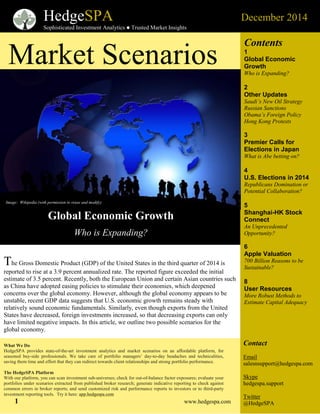The document summarizes two possible scenarios for Japan's economy following Prime Minister Shinzo Abe's announcement to dissolve parliament and hold new elections in December 2014. Scenario 1 predicts that Abe's economic policies (Abenomics) could be successful in stimulating growth if he remains in power after the election. Scenario 2 suggests that Japan's recession may continue if the election is costly and fails to build policy consensus, further weakening the economy and potentially forcing Abe to resign. Both scenarios discuss the challenges of Japan's large public debt and aging population.








